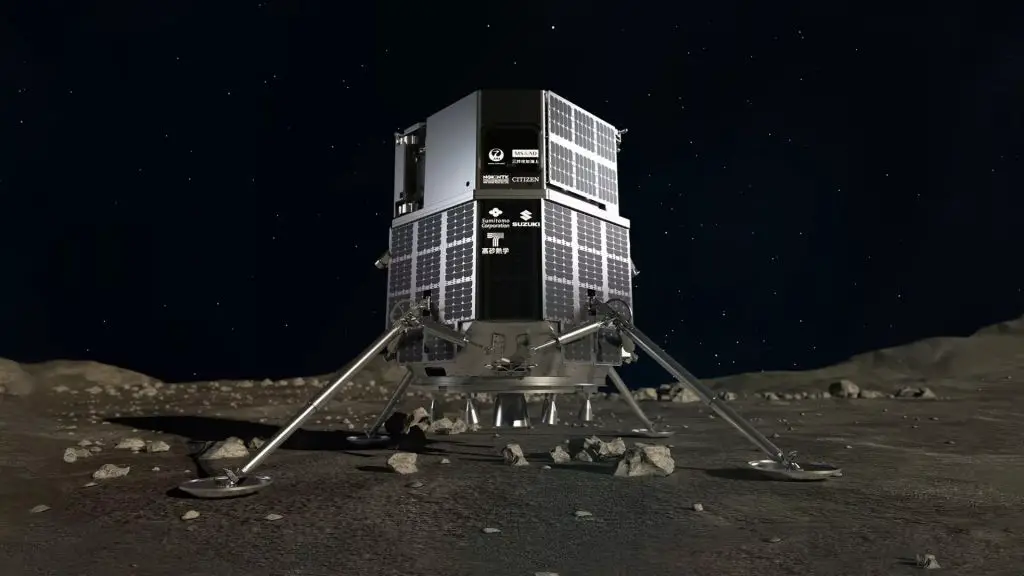As space agencies are aiming to explore the moon in search of newer discoveries, a Japanese aerospace company, iSpace has joined the race to create a new history and make a new change. The private company will be partnering with SpaceX to launch the Japanese private moon lander on November 28 at 3:46 a.m., (U.S. Eastern Standard Time) or 5:46 p.m. (Japan Standard Time). However, the date and time of launch may be subject to change depending on weather and other conditions.
The company plans to land the ispace’s Hakuto-R lander on the moon’s Atlas Crater located at 47.5°N, 44.4°E, on the southeastern of Mare Frigoris. Ispace has also planned alternative landing sites which include Oceanus Procellarum, Lacus Somniorum, Sinus Iridium, and many others. The landing of M1 will likely occur in April 2023. If the company succeeds in attaining such a milestone, it will become the first private aerospace company to land a rover on the lunar surface.
The sophisticated lunar lander will be launched atop a SpaceX Falcon 9 rocket from Florida’s Cape Canaveral Space Force Station. iSpace is looking at landing Hakuto-R on the lunar surface before April 2023. Upon successful touchdown, the Hakuto-R will gradually deploy a tiny United Arab Emirate rover named Rashid. The UAE designed this rover with four powerful wheels. It is meant to observe and study the moon for 14 Earth days with the aid of its high-resolution camera, a microscopic imager, a thermal imager, and a probe built to analyze the electrical charges on the moon’s surface.
How iSpace Planned to send its Spacecraft to the moon

On November 17, Takeshi Hakamada, the founder and CEO of ispace Inc. participated in a press conference in Tokyo and announced the plans of his company to launch the M1 lunar lander as part of the HAKUTO-R lunar exploration program. iSpace also revealed additional 10 mission milestones for the M1. These milestones cover the launch and landing of the lunar lander on the moon. The Japanese company also unveiled the landing sites for the M1 mission and other crucial information during the press conference which took place outside the company’s mission control center.
“Our first mission will lay the groundwork for unleashing the moon’s potential and transforming it into a robust and vibrant economic system,” said Takeshi Hakamada, Founder and CEO of ispace. “We look forward to contributing to NASA’s Artemis program as a commercial lunar transportation service and pioneering the development of future industries and connecting the Earth to the Moon and beyond.”
From Hakamada’s statement, you can see that the private commercial company is determined to reach a greater milestone in developing future industries and establishing interplanetary trade in the future.
What You Should Know About iSpace’s M1 Moon Lander mission
The M1 is planned as a technology demonstration mission that is intended to validate the lander’s design and sophistication. The ispace planned its business model to render sustainable lunar transportation and data services to several industries in the future. During the mission, ispace hopes to accurately weigh and evaluate the results to prepare against future missions of building sustainable technologies and meeting its business requirements on the lunar surface.
Hence, the outcome of M1 will help ispace advance its future missions starting with M2, which is currently in the development stage. The company is looking forward to launching mission 2 in 2024. During the M2 mission, plans to continue its operation on the moon to boost its capability of embracing the era of full-scale commercialization of the space industry.
The outcome of the M2 will be incorporated into Mission 3 (M3) which is scheduled to launch in 2025. M3 will immensely contribute to the success of NASA’s Artemis Program under its Commercial Lunar Payload Service Program. Ispace is looking at providing a more sophisticated and mature lander design for the M3 mission. The operation of this mission will be based on the outcome of the M1 and M2 missions.
Conclusion
Ispace was founded as a global lunar resource development company to expand our Planet and our Future. The company focuses on designing and building lunar landers and rovers. With its M1 mission launching in November for a technology demonstration mission on the lunar surface, ispace is on the moon to fulfilling its long-term goal and ambition since its establishment in 2010.
The historic move made by ispace in reaching the moon is a sign that we are slowly approaching the future of establishing interplanetary trade. What do you think about the M1 moon lander mission?






It’s beautiful and again we can learn from partnering within the Space Community as an opportunity to greatly advance our standards instead of keeping secrets. This is all about civilization moving forward. I can only wish this can happen faster